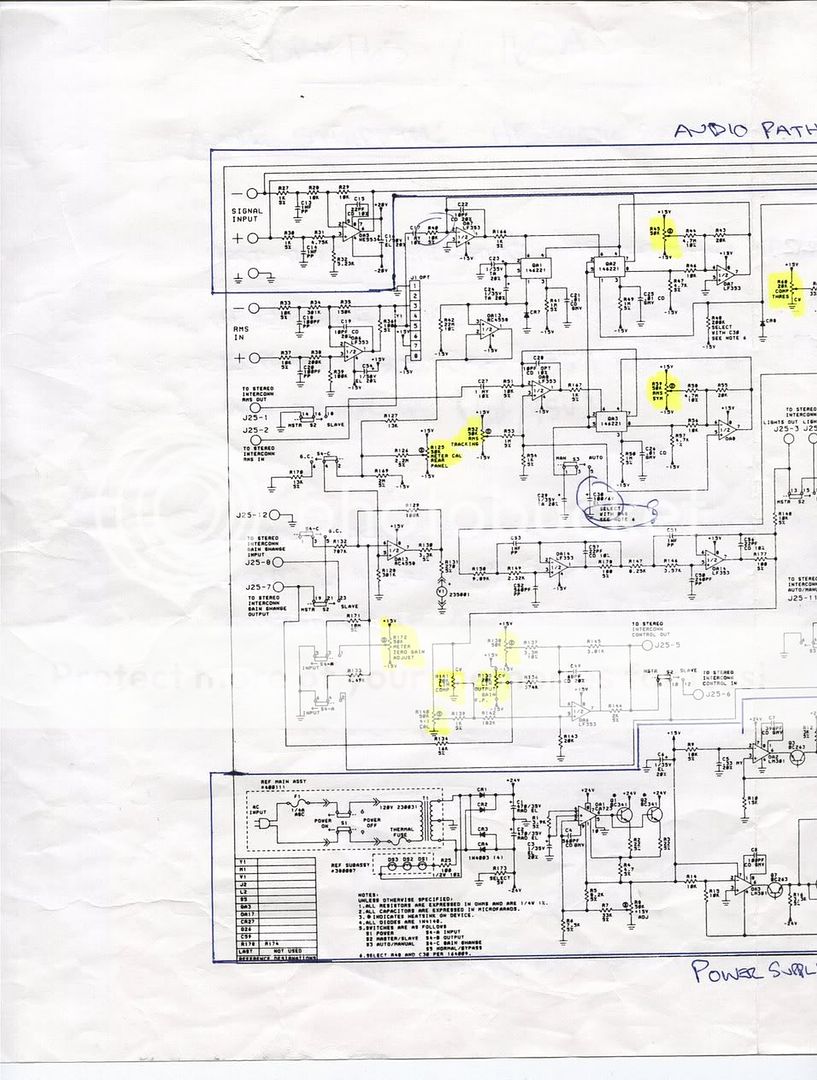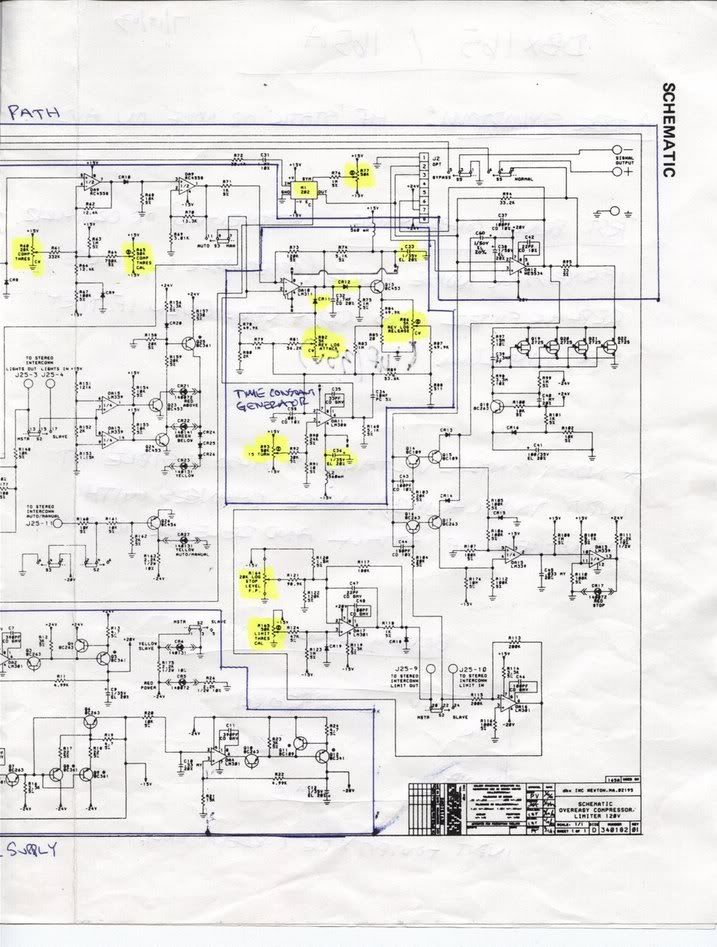I have a DBX 165 that was grossly distorting. I traced the problem to the DBX202 VCA and tried replacing it with a THAT 2180LB (there were pads right under the DBX202 that were pin compatible with the THAT 2180LB pinout. Now I've got no audio.
I injected a 1k tone and traced with a scope to the input and the output pins of the THAT 2180LB and I see the wave (albeit a little jagged), but no audio gets to the output. With bypass engaged, of course audio goes through just fine--just to make sure it wasn't the input or output connectors. Voltages at all the ICs seem normal (when compared with another DBX165)
Any help would be much appreciated.
The schematic is here:
http://classes.berklee.edu/mpe/pdf_files/manuals_pdf/dbx_165a.pdf
I injected a 1k tone and traced with a scope to the input and the output pins of the THAT 2180LB and I see the wave (albeit a little jagged), but no audio gets to the output. With bypass engaged, of course audio goes through just fine--just to make sure it wasn't the input or output connectors. Voltages at all the ICs seem normal (when compared with another DBX165)
Any help would be much appreciated.
The schematic is here:
http://classes.berklee.edu/mpe/pdf_files/manuals_pdf/dbx_165a.pdf





